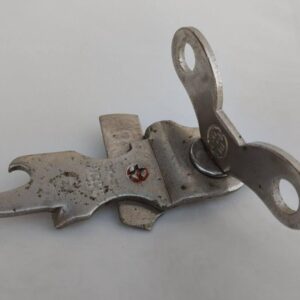While homes made from containers are relatively common nowadays, not all can be considered “luxury” homes.
The property featured in this video is a luxurious container cabin in the middle of the forest, which makes it incredibly unique.
“My wife and I bought this property in 2010. The original intent for the property was to find a place where we could ski from and do some river play in the summer,” owner Nick shared with Tiny House Giant Journey.

The Sea Containers cabin is located in Index, Washington, on about six acres of land. Nick and his wife wanted a place where they could get out of the city and connect with nature as a family.
There are currently six small cabins on the property.
Nick and his wife started sharing their cabins on Airbnb in 2017. Their first Airbnb was an A-frame tree house, and after that, they began working on their sea container project.
The container vans they used for the cabin were made in 2007 and have dents on the sides that show interesting proof of its previous life. Nick shared that the cabin is meant to be a ski cabin because they are only 30 minutes away from a popular skiing area.
They used containers for the build because Nick felt that they were unique and different enough for friends and family members to use it long-term but also enticing for guests interested in renting the cabin for short vacations.
The ski cabin is made of two 40-foot-long containers.
The person who sold the containers to Nick cut the containers in half, so its two 20-foot containers in the lower portion and then a 40-foot cantilever about 12 feet each on side.
“They’re so strong they can handle being hung over and they’re still structurally sound,” Nick said.
Rain isn’t a problem for guests because the cabin has a covered entryway, so guests don’t get wet when they bring in groceries or ski equipment from their car.

While they were building the cabin, they made it a point to minimize their impact on the environment.
“One of the goals for the site was not to take any trees down and just fit the Lego blocks in between, as they’re kind of situated now,” Nick said.
They built the cabin around the trees in the area and also ensured they didn’t damage any tree roots during construction.
The cabin features a two-person hot tub on the roof that adds to the uniqueness of the property.
Nick also shared that they added the tub to make the property a “bucket list” type of place.
Building the cabin didn’t take long. They received the containers in September and welcomed their first guests in March. The containers cost $12,000 and the total cost for the cabin was $250,000.
Next, Nick gave a tour of the inside of the cabin.
The ground floor is where living room and kitchen are located and has a total area of 640 square feet.
It has an open floor plan so guests can cook dinner and sit with friends and family at the same time. The couch provides a comfortable TV-watching zone where guests can also watch TV while cooking.

The living room features an electric fireplace that allows users to change the color of the flames.
Nick also loves lighting solutions and always incorporates LED strips in his builds. He worked with a supplier in Florida to create striking light sculptures in the living area and the bedrooms.
The LED lights can be dimmed depending on how bright the guest wants the lights to be.
Another unique feature of the cabin is the lava rock found throughout the property.
Nick is a Geology major, so he likes using lava rock in his builds. The kitchen wall uses Basalt tiles which is made from cooled lava.
He also wanted the cabin to be as sustainable as possible. The countertops are made from recycled materials while the floor is made of cork flooring, both highly sustainable materials.



